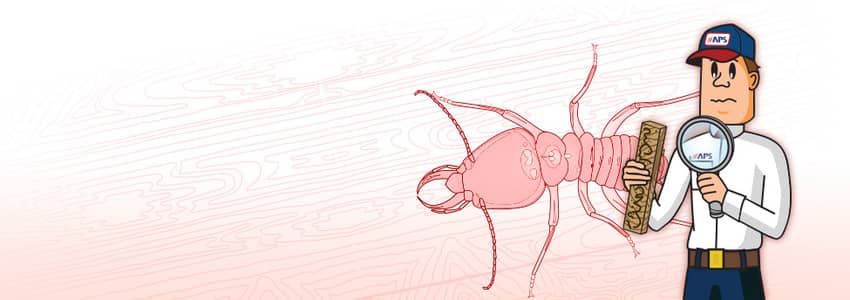How to Identify Termite Damage
Subterranean termites are a multi-billion dollar problem in the United States, causing over 5 billion dollars in structural damages every year! Their hunger for the cellulose found in wood attracts these destructive pests to our homes and businesses. Once inside, they can feed on the wood of your home 24 hours a day, 365 days a year, until all the wood has been consumed; however, long before that happens, the support beams will be weakened and the studs in load-bearing walls will give way to cascading structural issues. This damage often leads to windows sticking or opening and closing freely, bulging walls, sagging ceilings, and sinking floors. Therefore, termites don't have to consume all the wood in your house in order to destroy it. All they have to do is weaken its structural integrity. So when you start noticing these kinds of damages, it is too late to protect your home. Here are a few ways you can find termite damage before it's too late.
Did you notice that we said "find" termite damage? That's because termites don't make it easy for us to detect them. They tunnel underground and come up from the ground to feed on the wood of man-made structures. When they do, they feed almost exclusively on the inside of the structural wood of the home. But there are some rare exceptions that may make termite damage become detectable.
Do you have wood siding on your home? If you do, you may notice termite damage. Inspect your siding near the ground, especially in locations around your home that are moist or well-shaded. This damage will look just as you might expect it to: like something has been chewing on it.
Do you have a wooden fence? Inspect the bottom of the fence where it touches the soil. If you see carved trenching that appears dirty or gritty, you may be dealing with termites.
Do you have stumps in your yard? One of the best ways to see termite damage is by taking an ax to an old stump in your yard. If you find tightly-knit tunneling inside a stump and you don't immediately see tiny pale insects or large black ants crawling around inside, check to see if the tunnel walls are gritty to determine whether you are dealing with termites or carpenter ants; termites bring soil into their tunnels while carpenter ants do not.
Do you have a crawl space under your home? Crawl spaces are the perfect location for these destructive insects to get into a home without being detected. If termites have invaded your crawl space, you may find wood that looks like it has been chewed or crack-like holes in the wood. However, what you're more likely to see are the mud tubes subterranean termites build to get to the wood of your home. These tubes can be as thin as a pencil or several feet in thickness when combined together. It is also important to be aware that mud tubes can be built out of sight inside wall voids, cinder block piers, and other hidden areas, so if you don't see mud tubes, that doesn't mean your home isn't infested.
If termites have found their way into the walls of your home, there is a way you may be able to detect them. Termite damage can look similar to water damage. This is because termites will sometimes feed right up to the paint on a wall. This can cause the paint to bubble and alert you to their presence.
Termites don't make it easy for us to detect them which is why it is vital for every homeowner to have termite control services performed by a termite control specialist in order to protect your home from termite damage. If you live in Massachusetts or Connecticut, give us a call to find out if you're in our service area. If you are, let us at American Pest Solutions help you protect your home from the threat of subterranean termites! Our highly-trained and experienced pest control technicians can install the Advance® Termite Bait System around your home to make sure these “silent destroyers” don't find their way into your home and cause costly damages. Advance® works 24 hours a day, 7 days a week, 365 days a year to not only detect termite worker activity but to strike back at the colonies that send them! The active ingredient in Advance® is a growth inhibitor; when ingested by a termite, it prevents them from molting, which, in turn, prevents the termites from developing. This ultimately leads to the death of the termite. But before the worker termites die from feeding on the bait, they share the active ingredient with the rest of the termites in their colony through a process called trophallaxis, effectively eliminating the entire colony.
For more information about the Advance® Termite Bait System or our other termite control solutions, give us a call at (888) 324-7025 or use our contact form to set up a free evaluation!
For Immediate Assistance Call (888) 324-7025





